The best destinations for Tourism Midwest offer unique experiences, from bustling cityscapes to serene natural landscapes. Let’s delve into the heart of the Midwest and discover the top spots that should be on your travel radar.
SIXT.VN is here to help you plan your ideal trip, offering comprehensive travel solutions and expert guidance to ensure an unforgettable experience. We’re talking iconic landmarks, vibrant cultural scenes and stunning scenery. Think about planning a getaway, booking travel package, or exploring popular destinations.
1. What Makes the Midwest a Great Tourism Destination?
The Midwest’s appeal as a tourism destination lies in its diversity, affordability, and welcoming atmosphere, offering both natural beauty and urban excitement.
The Midwest’s appeal as a tourism hotspot stems from a mix of factors. First, it is diverse. The region features bustling cities like Chicago and Minneapolis, offering cultural attractions, culinary experiences, and architectural wonders. In contrast, the area also offers serene natural landscapes, such as the Great Lakes and national parks, providing opportunities for outdoor adventures and relaxation.
Second, it is affordable. In comparison with other popular U.S. destinations, the Midwest provides budget-friendly travel options, such as inexpensive lodging, eating, and activities. This cost-effectiveness is a substantial draw for families and budget tourists.
Third, it is welcoming. The Midwest is renowned for its kind people, laid-back atmosphere, and rich history. The “Midwest Nice” is more than simply a stereotype; it’s a cultural element that enhances tourists’ experiences.
Finally, the Midwest offers a wide variety of activities. Whether you’re interested in art, history, outdoor activities, or culinary experiences, you’ll find something to suit your tastes. As stated by the U.S. Travel Association, the Midwest has something to offer every traveler. This includes visiting landmarks, exploring historical sites, discovering cultural traditions, and enjoying local cuisine. This creates a perfect tourist experience.
2. What are the Top Cities to Visit in the Midwest?
The top cities in the Midwest include Chicago, Minneapolis, and Indianapolis, each offering unique cultural, culinary, and historical attractions.
When considering tourism in the Midwest, some cities stand out due to their diverse offerings.
2.1 Chicago, Illinois
Chicago, Illinois is a must-visit, boasting iconic architecture, world-class museums, and a vibrant arts scene.
Chicago, Illinois, often called the “Windy City,” is a must-see location in the Midwest. Known for its iconic architecture, Chicago offers attractions, such as the Willis Tower and the John Hancock Center, which provides stunning views of the city and Lake Michigan. The city’s architecture is a feast for the eyes, combining historic and modern buildings. According to the Chicago Architecture Center, the city’s skyline is one of the most recognized and admired in the world.
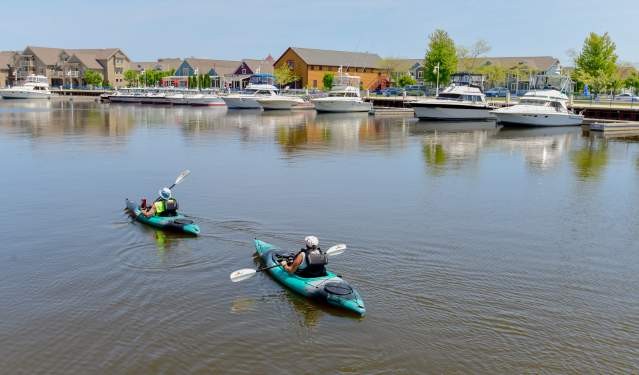 Chicago Skyline
Chicago Skyline
Moreover, Chicago is famous for its world-class museums. The Art Institute of Chicago, home to masterpieces, such as Grant Wood’s “American Gothic,” attracts art lovers. The Field Museum, with its enormous collection of natural history exhibits, offers hours of investigation. The Museum of Science and Industry is also a family favorite, with engaging and interactive shows.
Chicago’s vibrant arts scene is another highlight. The city has several theatres, from Broadway in Chicago to small, independent venues. Live music is plentiful, with venues, such as the House of Blues and the Green Mill Cocktail Lounge, featuring a wide array of musical genres. The city hosts numerous festivals throughout the year, including the Chicago Blues Festival and Lollapalooza, enhancing its cultural vibrancy.
Culinary experiences in Chicago are diverse and delectable. The city is renowned for its deep-dish pizza, Chicago-style hot dogs, and high-end dining establishments. Foodies may discover a wide variety of dining options, from Michelin-starred restaurants to lively food markets.
2.2 Minneapolis, Minnesota
Minneapolis, Minnesota offers a blend of cultural experiences and outdoor adventures, perfect for nature lovers and city explorers alike.
Minneapolis, Minnesota, presents a unique combination of cultural and outdoor activities. Known for its “City of Lakes” moniker, Minneapolis has lots of waterways and green areas to discover. According to the Minneapolis Park and Recreation Board, the city has over 180 parks and several lakes, making it an outdoor lover’s paradise. Visitors may enjoy boating, kayaking, and hiking in the summer, and ice skating and cross-country skiing in the winter.
Culturally, Minneapolis boasts a thriving arts scene. The Minneapolis Institute of Art has a comprehensive collection of works spanning several eras and cultures. The Walker Art Center, known for its contemporary art displays, and the adjacent Minneapolis Sculpture Garden provide unique art experiences. The city also has several theatres, such as the Guthrie Theater, which is well-known for its architectural beauty and exceptional plays.
Minneapolis provides an abundance of culinary delights. The city features several restaurants, from casual eateries to upscale dining establishments, serving foods from across the world. Minneapolis also has a thriving craft beer culture, with microbreweries serving unique and delectable brews.
A must-see attraction in Minneapolis is the Mall of America, one of the world’s biggest shopping malls. The mall has hundreds of stores, restaurants, and entertainment options, such as an amusement park and an aquarium. It is a full-day experience in and of itself.
2.3 Indianapolis, Indiana
Indianapolis, Indiana is rich in history and sports culture, highlighted by the Indianapolis Motor Speedway and various historical monuments.
Indianapolis, Indiana, commonly known as “Indy,” provides a rich blend of history and athletic culture. Indianapolis Motor Speedway, home to the Indianapolis 500, is a must-see location for racing fans. According to the Indianapolis Motor Speedway Museum, the speedway is the world’s biggest sports arena and has hosted racing events for over a century. Visitors may tour the speedway, explore the museum, and see the famous Yard of Bricks.
Indianapolis also features several historic landmarks. The Indiana State Museum presents the state’s natural and cultural past via appealing exhibits. The Eiteljorg Museum of American Indians and Western Art has a comprehensive collection of Native American and Western art and artifacts. Monument Circle, with the Soldiers and Sailors Monument in the center, is an iconic downtown feature that honors Indiana’s Civil War veterans.
Indianapolis’ cultural scene includes the Mass Ave Arts & Entertainment District. Mass Ave is home to art galleries, theatres, and music venues. The Indianapolis Artsgarden, a glass dome spanning a busy intersection, hosts free performances and art exhibits.
The culinary scene in Indianapolis is varied. The city features restaurants, from farm-to-table establishments to global fare. St. Elmo Steak House, established in 1902, is an Indianapolis icon known for its shrimp cocktail.
3. What Natural Attractions Should Tourists Visit in the Midwest?
Tourists should explore the Great Lakes, national parks, and scenic drives, which highlight the Midwest’s natural beauty and recreational opportunities.
The Midwest is endowed with magnificent natural beauties, which make it an interesting tourist destination for outdoor enthusiasts.
3.1 The Great Lakes
The Great Lakes offer endless water activities and stunning landscapes, making them a top natural attraction in the Midwest.
The Great Lakes—Superior, Michigan, Huron, Erie, and Ontario—are among the world’s biggest freshwater lakes. They provide endless water activities, breathtaking scenery, and a plethora of recreational opportunities. The Great Lakes are more than simply beautiful; they also have important economic and ecological value. The Great Lakes Restoration Initiative notes that these lakes sustain local communities, promote industry, and protect a variety of plant and animal species.
Each Great Lake has its own appeal. Lake Superior, the biggest of the lakes, is renowned for its pristine waters, rugged shorelines, and picturesque Pictured Rocks National Lakeshore in Michigan. Lake Michigan, home to cities, such as Chicago and Milwaukee, offers miles of sandy beaches, dunes, and waterfront activities. Lake Huron is known for its numerous islands, shipwrecks, and the beautiful Manitoulin Island, the world’s biggest freshwater island. Lake Erie, the shallowest of the Great Lakes, has a thriving fishing sector, gorgeous beaches, and the beautiful Lake Erie Islands. Lake Ontario, the smallest of the Great Lakes, is home to the picturesque Thousand Islands area and provides several sailing and boating opportunities.
The Great Lakes provide a variety of activities for all interests. Fishing is a popular activity, with possibilities to capture salmon, trout, walleye, and perch. Boating and sailing are excellent ways to see the lakes’ vastness and explore hidden coves and islands. Swimming, sunbathing, and beachcombing are also available on the numerous beaches. Hiking and camping are also available in the vicinity of the lakes, providing stunning views and outdoor adventures.
3.2 National Parks
National Parks are offering hiking, wildlife viewing, and nature photography opportunities for all visitors.
The Midwest has several national parks that highlight the area’s natural beauty and cultural significance. These parks provide a variety of activities, from hiking and wildlife viewing to historical research and scenic drives.
3.2.1 Indiana Dunes National Park, Indiana
Indiana Dunes National Park, along Lake Michigan, has sandy beaches, towering dunes, and diverse ecosystems. The National Park Service states that the park protects over 15,000 acres of land and gives possibilities for hiking, swimming, birding, and nature study.
3.2.2 Voyageurs National Park, Minnesota
Voyageurs National Park, located on the Canadian border, is noted for its pristine waterways, rough forests, and abundant wildlife. According to the National Park Service, the park is an excellent location for canoeing, kayaking, fishing, and backcountry camping.
3.2.3 Cuyahoga Valley National Park, Ohio
Cuyahoga Valley National Park, located between Cleveland and Akron, preserves the rural landscape along the Cuyahoga River. The park has waterfalls, hiking trails, and the historic Ohio & Erie Canal Towpath Trail, making it ideal for hiking, biking, and historical exploration.
3.2.4 Isle Royale National Park, Michigan
Isle Royale National Park, located in Lake Superior, provides a wilderness experience with hiking trails, camping areas, and possibilities for wildlife viewing, including wolves and moose. According to the National Park Service, the park is accessible by boat or seaplane and is a refuge for nature lovers and backcountry adventurers.
3.3 Scenic Drives
Scenic drives provide breathtaking views of the Midwest’s diverse landscapes and picturesque routes.
Scenic drives in the Midwest reveal the region’s beautiful landscapes, historic villages, and rural routes. These drives provide a slower, more immersive mode of experiencing the region’s varied attractions.
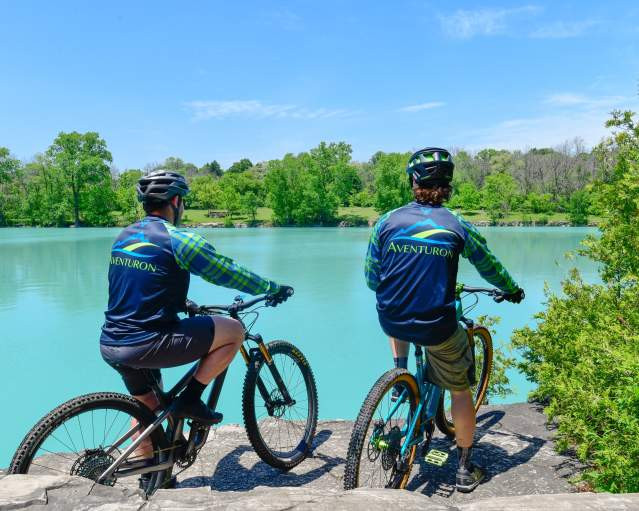 Scenic Drive
Scenic Drive
3.3.1 The Great River Road, Minnesota, Wisconsin, Iowa, Illinois
The Great River Road follows the course of the Mississippi River, providing gorgeous views, historical sites, and lovely river towns. The National Scenic Byways Program recognizes the route, which spans from northern Minnesota to the Gulf of Mexico. The route enables travelers to experience the mighty Mississippi’s beauty and importance.
3.3.2 The Lake Michigan Circle Tour, Wisconsin, Illinois, Indiana, Michigan
The Lake Michigan Circle Tour circles Lake Michigan, traveling through four states and displaying the lake’s scenic shoreline. The route passes through sandy beaches, towering dunes, and lovely coastal villages, providing enough opportunity for outdoor activities and sightseeing.
3.3.3 Door County Coastal Byway, Wisconsin
Door County Coastal Byway runs along the Door Peninsula, providing panoramic views of Lake Michigan and Green Bay. The route passes through beautiful villages, fruit orchards, lighthouses, and state parks, making it ideal for a picturesque and cultural trip.
3.3.4 Hocking Hills Scenic Byway, Ohio
Hocking Hills Scenic Byway winds through the Hocking Hills region, known for its rough cliffs, waterfalls, and forests. The route passes through Hocking Hills State Park, providing options for hiking, wildlife viewing, and taking in the region’s natural beauty.
4. What Cultural and Historical Attractions Are Available?
Cultural and historical attractions include historical sites, museums, and vibrant arts scenes, which showcases the Midwest’s rich history and cultural contributions.
The Midwest is rich in cultural and historical attractions, providing tourists the opportunity to learn about the region’s diverse heritage, contributions, and creative spirit.
4.1 Historical Sites
Historical sites provide a glimpse into the Midwest’s past, which includes Native American history, early American settlement, and industrial development.
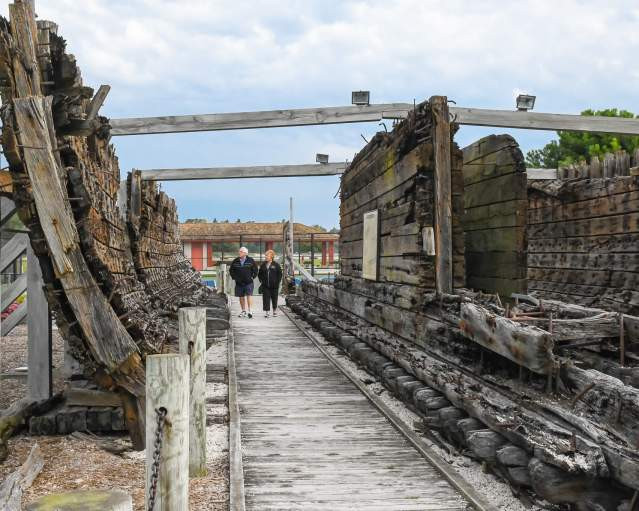 Historical place
Historical place
4.1.1 Cahokia Mounds State Historic Site, Illinois
Cahokia Mounds State Historic Site, near Collinsville, preserves the remains of the biggest pre-Columbian city north of Mexico. According to the Illinois Historic Preservation Agency, the site was once home to thousands of people and features spectacular earthen mounds, providing insight into Native American culture.
4.1.2 The Henry Ford, Michigan
The Henry Ford in Dearborn is a vast indoor and outdoor museum complex that commemorates American innovation and industry. The complex has the Henry Ford Museum of American Innovation, Greenfield Village, and the Ford Rouge Factory Tour, providing a comprehensive insight into the evolution of American technology and culture.
4.1.3 Conner Prairie, Indiana
Conner Prairie in Fishers is an interactive history museum that portrays 19th-century life in Indiana. The museum has recreated villages, historical reenactments, and hands-on exhibits that immerse visitors in the past.
4.1.4 Amana Colonies, Iowa
Amana Colonies in Iowa are a collection of seven villages founded by German Pietists in the mid-19th century. The colonies are known for their communal living, traditional crafts, and well-preserved architecture, providing insight into a unique chapter of American history.
4.2 Museums
Museums provide diverse collections and exhibitions, spanning art, history, science, and culture.
Museums across the Midwest provide various collections and exhibits, spanning art, history, science, and culture. These museums serve as educational hubs, allowing visitors to explore several areas of knowledge and creativity.
4.2.1 Art Institute of Chicago, Illinois
The Art Institute of Chicago is one of the world’s premier art museums, with a large collection spanning numerous eras and cultures. The museum has masterpieces, such as Grant Wood’s “American Gothic,” Claude Monet’s “Impression, Sunrise,” and Edward Hopper’s “Nighthawks,” making it a must-see for art enthusiasts.
4.2.2 Minneapolis Institute of Art, Minnesota
The Minneapolis Institute of Art (Mia) has a collection of over 90,000 artworks representing 5,000 years of world history. The museum’s holdings include paintings, sculptures, ornamental arts, textiles, and photography, offering a diverse and thorough art experience.
4.2.3 Museum of Science and Industry, Illinois
The Museum of Science and Industry in Chicago is one of the world’s biggest science museums. The museum has interactive exhibits, displays, and unique artifacts, such as a U-505 German submarine, allowing visitors to engage with scientific concepts.
4.2.4 Rock & Roll Hall of Fame, Ohio
The Rock & Roll Hall of Fame in Cleveland honors the history and impact of rock music. The museum has exhibits, memorabilia, and interactive displays that trace the evolution of rock from its roots to the present day.
4.3 Vibrant Arts Scene
Vibrant arts scenes provide live music, theatre, and art galleries, celebrating the Midwest’s creative culture.
The Midwest boasts vibrant arts scenes in its cities and towns, which provide a plethora of live music, theatre, and art galleries. These arts scenes contribute to the region’s cultural landscape.
4.3.1 Chicago, Illinois
Chicago’s arts scene is well-known, with many theatres, music venues, and art galleries. The city has several theatre districts, from Broadway in Chicago to small, independent venues. Chicago also has a thriving live music culture, with venues, such as the House of Blues and the Green Mill Cocktail Lounge, featuring a wide array of musical styles.
4.3.2 Minneapolis, Minnesota
Minneapolis’ arts scene includes theatres, such as the Guthrie Theater, which is known for its exceptional plays and architectural beauty. The city also has many art galleries, museums, and music venues. The annual Minneapolis Fringe Festival, which has hundreds of performances in different venues, is a highlight.
4.3.3 Madison, Wisconsin
Madison has a vibrant arts scene with several theaters, music venues, and art galleries. The Overture Center for the Arts hosts Broadway shows, concerts, and other events, and the city has many smaller venues and galleries that display local talent.
4.3.4 Ann Arbor, Michigan
Ann Arbor is home to a thriving arts scene, because of its proximity to the University of Michigan. The city has theatres, music venues, and art galleries. The annual Ann Arbor Art Fair, which attracts artists and fans from across the country, is a major highlight.
5. What are the Best Food and Drink Experiences in the Midwest?
The best food and drink experiences showcase the Midwest’s culinary diversity, from farm-to-table dining to craft breweries and regional specialties.
The Midwest provides a rich and diversified culinary landscape, with a plethora of dining experiences for all tastes and preferences. From farm-to-table dining and craft breweries to unique regional specialties, the Midwest is a culinary hotspot for foodies and drink lovers alike.
5.1 Farm-to-Table Dining
Farm-to-table dining features fresh, locally sourced ingredients, celebrating regional cuisine and supporting local agriculture.
Farm-to-table eating in the Midwest honors the region’s rich agricultural history and commitment to local food. Restaurants that emphasize farm-to-table dining provide meals prepared with fresh, locally sourced foods, promoting regional flavors and boosting local agriculture.
 Farm to table
Farm to table
5.1.1 The Herbfarm, Washington
While technically in the Pacific Northwest, The Herbfarm is an example of farm-to-table dining, featuring a nine-course meal with ingredients sourced from the restaurant’s own farm.
5.1.2 Zingerman’s Delicatessen, Michigan
Zingerman’s Delicatessen in Ann Arbor is renowned for its high-quality sandwiches, handmade breads, and locally sourced foods. The deli places a premium on using foods from local farmers and producers, resulting in a delicious and sustainable eating experience.
5.1.3 St. Elmo Steak House, Indiana
St. Elmo Steak House in Indianapolis, established in 1902, is a classic steakhouse that highlights local foods in its dishes. The restaurant is known for its shrimp cocktail and high-quality steaks, which feature local products whenever feasible.
5.1.4 Graze, Wisconsin
Graze in Madison is a farm-to-table restaurant that emphasizes regional, seasonal foods. The restaurant collaborates with local farmers and suppliers to produce innovative meals that honor Wisconsin’s agricultural heritage.
5.2 Craft Breweries
Craft breweries offer unique and locally produced beers, enhancing the Midwest’s beverage scene.
Craft breweries have sprung up across the Midwest, boosting the region’s beverage landscape with unique and locally produced beers. These breweries range from microbreweries to larger, regional operations, each with its own identity and distinctive brews. According to the Brewers Association, craft beer has seen considerable growth in recent years, with more and more consumers preferring local and independent breweries.
5.2.1 Surly Brewing Company, Minnesota
Surly Brewing Company in Minneapolis is one of the Midwest’s most well-known craft breweries, recognized for its aggressive and creative beers. The brewery has a taproom and a beer hall, which offer a variety of Surly beers, as well as a restaurant that serves delicious fare.
5.2.2 Three Floyds Brewing, Indiana
Three Floyds Brewing in Munster is recognized for its daring and experimental beers, such as the renowned Zombie Dust pale ale. The brewery has a brewpub that serves a broad variety of beers, as well as a menu of inventive and tasty cuisine.
5.2.3 New Glarus Brewing, Wisconsin
New Glarus Brewing in New Glarus is devoted to creating traditional Wisconsin beers using local ingredients. The brewery is located on a beautiful hilltop and provides tours, tastings, and a beer garden.
5.2.4 Bell’s Brewery, Michigan
Bell’s Brewery in Kalamazoo is a well-known craft brewery that has been producing a variety of beers. The brewery has a taproom and a beer garden that feature Bell’s beers, as well as live music and other events.
5.3 Regional Specialties
Regional specialties provide a taste of the Midwest’s unique food culture.
Regional delicacies in the Midwest give a glimpse into the region’s distinct food traditions, with each state and area having its own culinary treasures. These foods are frequently rooted in local history, cultural heritage, and agricultural riches, offering a distinctive culinary experience for tourists.
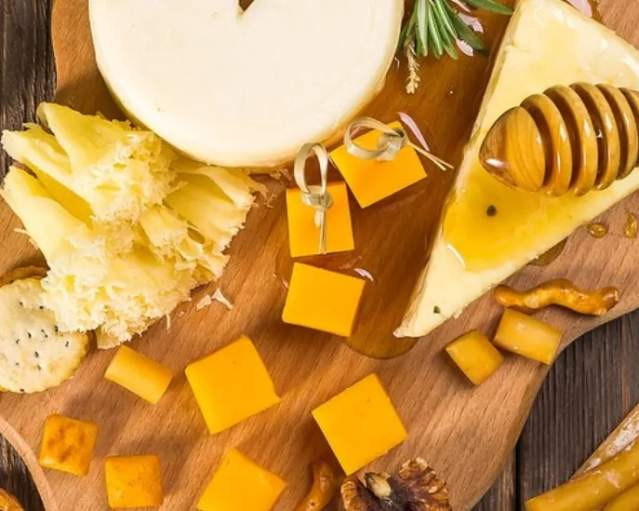 Food
Food
5.3.1 Wisconsin Cheese Curds
Wisconsin is known as “America’s Dairyland,” and cheese curds are one of its most famous culinary exports. These fresh, squeaky cheese bits are available fried or plain and are a must-try for any visitor to Wisconsin.
5.3.2 Chicago-Style Deep-Dish Pizza
Chicago-style deep-dish pizza is a Midwest icon, with a deep, buttery crust packed with cheese, toppings, and a rich tomato sauce. Lou Malnati’s, Giordano’s, and Pequod’s Pizza are among Chicago’s most renowned pizzerias.
5.3.3 Cincinnati Chili
Cincinnati chili is a unique meal with Greek and Macedonian origins. The chili is served over spaghetti and topped with cheese, onions, and beans.
5.3.4 Indiana Pork Tenderloin Sandwich
The Indiana pork tenderloin sandwich comprises a big, breaded, and fried pork tenderloin served on a bun with lettuce, tomato, and mayonnaise. The sandwich is a popular staple in Indiana and is available at restaurants across the state.
6. How Can Tourists Find Affordable Accommodation in the Midwest?
Affordable accommodations can be found through budget hotels, vacation rentals, and campgrounds, providing cost-effective options for all travelers.
Finding inexpensive lodging is an important consideration for travelers in the Midwest. There are several options for affordable accommodation, from budget hotels and vacation rentals to campgrounds and hostels.
6.1 Budget Hotels
Budget hotels provide clean and comfortable rooms at reasonable prices, suitable for budget-conscious travelers.
Budget hotels provide clean, comfortable accommodations at affordable prices, making them an excellent choice for budget-conscious travelers. These hotels usually offer basic facilities, such as free breakfast, Wi-Fi, and parking, without the frills of higher-end establishments. According to a Hotels.com analysis, budget hotels are frequently the most cost-effective alternative for travelers seeking affordable lodging.
6.1.1 Motel 6
Motel 6 is a budget hotel chain with locations throughout the Midwest. The hotels provide simple, clean rooms and are frequently located near highways and major attractions.
6.1.2 Super 8
Super 8 is another budget hotel chain with locations across the Midwest. The hotels provide simple rooms and facilities, such as free breakfast and Wi-Fi.
6.1.3 Days Inn
Days Inn is a budget hotel chain that provides rooms and features, such as free breakfast and Wi-Fi. Many Days Inn locations have swimming pools and exercise centers.
6.1.4 Red Roof Inn
Red Roof Inn is a budget hotel chain with locations around the Midwest. The hotels provide simple, clean rooms and features, such as free Wi-Fi and pet-friendly accommodations.
6.2 Vacation Rentals
Vacation rentals include apartments, houses, and cabins, which offer more space and amenities than hotels, often at competitive rates.
Vacation rentals, such as apartments, houses, and cabins, provide more space, facilities, and privacy than standard hotel rooms. These rentals are available at competitive prices, making them an appealing choice for families, groups, and tourists looking for a home-away-from-home experience. According to Airbnb, vacation rentals are frequently less expensive than hotels, particularly for longer stays.
6.2.1 Airbnb
Airbnb is a popular vacation rental marketplace with a wide selection of properties throughout the Midwest. Airbnb has possibilities, such as apartments in cities, homes in suburbs, and cabins in rural areas.
6.2.2 VRBO (Vacation Rentals by Owner)
VRBO (Vacation Rentals by Owner) is another popular vacation rental marketplace with properties in the Midwest. VRBO has a diverse selection of rentals, including houses, condos, and cabins.
6.2.3 Local Rental Companies
Local rental firms in the Midwest provide vacation rentals in specific locations. These firms frequently provide a more tailored service and a better knowledge of the area.
6.3 Campgrounds
Campgrounds provide cost-effective lodging for outdoor enthusiasts, with many providing facilities, such as restrooms, showers, and picnic areas.
Campgrounds provide affordable accommodation for outdoor enthusiasts, letting people to immerse themselves in nature while saving money on lodging. Many campgrounds provide basic facilities, including toilets, showers, picnic sites, and fire rings, making it simple to create a comfortable camping experience. According to the National Park Service, campgrounds are a great way to enjoy nature while on a budget.
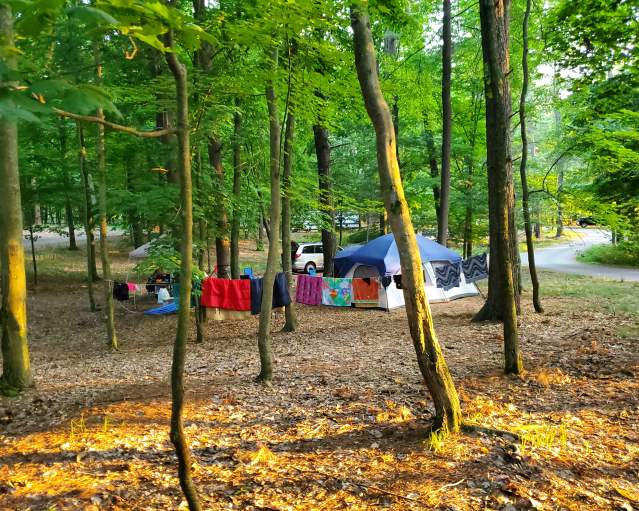 Campground
Campground
6.3.1 State Parks
State parks throughout the Midwest have campsites with varying facilities. These parks frequently have gorgeous landscapes, hiking routes, and water activities, making them ideal for camping vacations.
6.3.2 National Parks
National parks in the Midwest, including Indiana Dunes National Park and Voyageurs National Park, have campsites with varying facilities. These parks provide a wilderness experience with possibilities for hiking, wildlife viewing, and nature study.
6.3.3 Private Campgrounds
Private campgrounds offer a variety of campsites with facilities, such as swimming pools, playgrounds, and recreational activities. These campgrounds frequently provide a more comfortable camping experience than public campgrounds.
7. What Are Some Budget-Friendly Activities in the Midwest?
Budget-friendly activities include free museums, parks, and outdoor recreation, providing engaging experiences for travelers on a budget.
The Midwest has a plethora of budget-friendly activities, enabling visitors to explore the region’s attractions without breaking the bank. From free museums and parks to outdoor recreation and cultural events, there’s plenty to see and do on a budget.
7.1 Free Museums and Attractions
Free museums and attractions provide educational and cultural experiences at no cost.
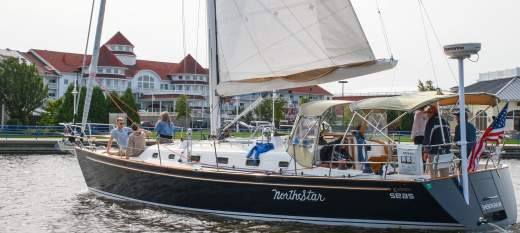 Beach Cam
Beach Cam
7.1.1 National Museum of the United States Air Force, Ohio
The National Museum of the United States Air Force in Dayton, Ohio, has free admission and displays a vast collection of aircraft and aviation-related artifacts. The museum tells the story of aviation history, from early airplanes to modern spacecraft.
7.1.2 Saint Louis Art Museum, Missouri
The Saint Louis Art Museum has free admission and features a wide-ranging collection that spans centuries and cultures. The museum’s holdings include paintings, sculptures, ornamental arts, and archaeological treasures, providing a diverse art experience.
7.1.3 Lincoln Park Zoo, Illinois
The Lincoln Park Zoo in Chicago has free admission and has a wide array of animals from across the globe. The zoo focuses on conservation and education, making it an excellent destination for families and animal lovers.
7.2 Parks and Outdoor Recreation
Parks and outdoor recreation provides free hiking, picnicking, and enjoying the Midwest’s natural beauty.
Parks and outdoor leisure in the Midwest provide free possibilities for hiking, picnicking, and taking in the region’s natural splendor. These locations provide a welcome reprieve from city life and a chance to connect with nature.
7.2.1 Millennium Park, Illinois
Millennium Park in Chicago has free admission and features iconic landmarks, such as Cloud Gate (“The Bean”), Crown Fountain, and Lurie Garden. The park hosts free concerts, events, and activities, making it a popular tourist destination.
7.2.2 Minneapolis Chain of Lakes, Minnesota
The Minneapolis Chain of Lakes has several lakes, parks, and trails that are free to discover. Visitors may enjoy hiking, biking, kayaking, and picnicking in this picturesque urban oasis.
7.2.3 Hocking Hills State Park, Ohio
Hocking Hills State Park has no entrance fee and has rough cliffs, waterfalls, and forests. The park’s hiking routes, such as Old Man’s Cave and Ash Cave, provide spectacular views and outdoor experiences.
7.3 Free Cultural Events and Festivals
Free cultural events and festivals provide engaging and enjoyable experiences without any cost.
Free cultural events and festivals occur throughout the Midwest, providing engaging and entertaining experiences for tourists without any expense. These events emphasize the region’s diversified culture and provide possibilities to connect with the local population.
7.3.1 Chicago Blues Festival, Illinois
The Chicago Blues Festival is a free annual event that commemorates blues music. The festival features performances by renowned blues artists, as well as food vendors, art displays, and other activities, drawing hundreds of thousands of music fans.
7.3.2 Summerfest, Wisconsin
Summerfest in Milwaukee is a big annual music event that includes free performances on certain stages and days. The festival has a broad spectrum of musical genres, as well as food vendors, art exhibits, and other activities.
7.3.3 Ann Arbor Summer Festival, Michigan
The Ann Arbor Summer Festival has free outdoor concerts, movies, and events in the summer. Top of the Park, the festival’s main outdoor venue, hosts a wide array of performances and activities that are free to the public.
8. What Are the Best Times to Visit the Midwest for Tourism?
The best times to visit are spring and fall, offering pleasant weather and fewer crowds, ideal for enjoying outdoor activities and cultural experiences.
The ideal time to visit the Midwest varies depending on personal preferences and activities. Spring and autumn, however, are often regarded the best times for tourism, providing comfortable weather and fewer crowds than the summer months.
8.1 Spring (April-May)
Spring brings milder temperatures, blossoming flowers, and outdoor festivals, making it a scenic and lively time to visit.
Spring (April–May) is a great time to visit the Midwest since the weather is pleasant and the scenery is vibrant. As stated by the National Oceanic and Atmospheric Administration (NOAA), temperatures increase during the spring, making it more comfortable to explore outdoor attractions.
Spring brings blooming flowers, budding trees, and colorful landscapes that make the area beautiful. Parks, gardens, and natural places come alive with vibrant hues, providing many possibilities for scenic hikes and outdoor activities.
Spring is festival season in the Midwest, with several cultural and outdoor events taking place. These festivals emphasize music, art, food, and local traditions, providing tourists with engaging and immersive experiences.
8.2 Summer (June-August)
Summer is ideal for water activities, outdoor festivals, and exploring the Great Lakes, though it can be crowded.
Summer (June–August) is a popular time to visit the Midwest, since the weather is usually warm and sunny. The Great Lakes, parks, and outdoor attractions are seeing increased activity, providing a broad array of activities and experiences.
Summer is the ideal season for water activities on the Great Lakes, with possibilities for swimming, boating, kayaking, and fishing. The lakes provide a refreshing reprieve from the heat, and the shoreline communities provide various activities and events.
Summer is festival season in the Midwest, with several music, art, and food festivals. These festivals draw big crowds and provide lively and interesting experiences for tourists.
While summer in the Midwest provides various opportunities for outdoor activities and cultural events, it is essential to prepare for bigger crowds and peak-season pricing. Planning and booking ahead will help you make the most of your summer visit to the Midwest.
8.3 Fall (September-October)
Fall offers stunning foliage, harvest festivals, and cooler temperatures, ideal for scenic drives and enjoying the Midwest’s natural beauty.
Fall (September–October) is a gorgeous and comfortable time to visit the Midwest, with scenery and harvest festivals. As stated by the Farmer’s Almanac, the fall season delivers cooler temperatures and bright foliage, making it ideal for scenic drives and outdoor activities.
Fall delivers breathtaking scenery, with trees changing colors to brilliant reds, oranges, and yellows. Scenic drives, such as the Great River Road and the Door County Coastal Byway, provide opportunities to see the Midwest’s gorgeous fall scenery.
Fall is harvest festival season in the Midwest, with several events commemorating the region’s agricultural history and local products. These festivals provide possibilities to sample fresh produce, handmade crafts, and regional dishes, offering tourists with engaging and tasty experiences.
8.4 Winter (November-March)
Winter provides winter sports, holiday festivities, and indoor attractions, ideal for those seeking a snowy getaway.
Winter (November–March) in the Midwest provides a distinct set of attractions and activities, making it an appropriate time to visit for those seeking a snowy getaway or holiday festivities. Although the weather can be harsh, winter in the Midwest provides a unique beauty and many indoor and outdoor activities.
The Midwest has winter sports, such as skiing, snowboarding, ice skating, and snowshoeing. Ski areas and resorts provide groomed slopes, lessons, and rental equipment, serving both beginner and expert skiers. Ice skating rinks may be found in cities and towns, as well as picturesque outdoor rinks in parks and natural settings.
Winter transforms the Midwest into a magical wonderland with holiday events and festivities. Cities and towns are adorned with lights, trees, and decorations, and there are several Christmas markets, parades, and cultural events that commemorate the season.
During the winter, the Midwest has several indoor attractions, such as museums, art galleries, and theatres. These locations provide warm and engaging experiences for tourists and a welcome reprieve from the cold weather.
9. What Essential Travel Tips Should Tourists Keep in Mind for a Midwest Trip?
Essential travel tips include planning for varying weather, packing appropriately, and being aware of seasonal attractions, ensuring a smooth and enjoyable trip.
Keeping specific travel guidelines in mind is crucial for a successful and delightful trip to the Midwest. From planning



